In the view of architectural lighting designer Takeo Sugamata, light is more than a phenomenon; it is a material. After experiencing his work at Manhattan for Cubes Indesign issue 70, we were keen to find out more about his approach. Narelle Yabuka reports.

October 13th, 2014
A visit to Manhattan, the freshly redefined cocktail bar at Singapore’s Regent Hotel, makes one thing abundantly clear: in this dimly lit theatrical realm, photons have been as carefully crafted as the spatial sequence, material finishes and furniture. Here, the transformative potential of lighting is on full display.
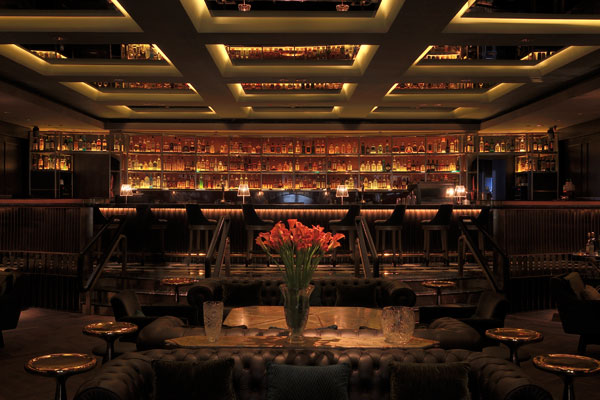
Manhattan at The Regent, Singapore (interior design by Distillery)
Manhattan is an establishment where the theatre of bar culture unfolds dramatically and timelessly through a design that triggers notions of past eras. In this sanctum of leather, marble, velvet and gold plating, there is simply no place for the sharpness of the blinding downlight or the glare of the fluorescent tube. The lighting of the space is as crucial to the enjoyment of the classic cocktail bar concept as the spaces, objects and surfaces, which were choreographed with sophistication by Distillery.
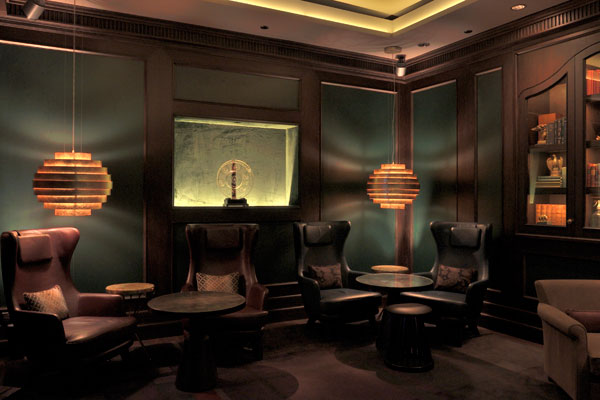
Manhattan at The Regent, Singapore (interior design by Distillery)
Weaving the threads of an experience of grandiosity, intimacy and discovery, architectural lighting designer Takeo Sugamata contributed critically to Distillery’s design. From the lantern-like entrance to the strategic dimness of the main salon, to the glowing stage-like bar, to the accent lighting in the deepest private salon, Sugamata didn’t merely illuminate the space; he shaped light as a material.
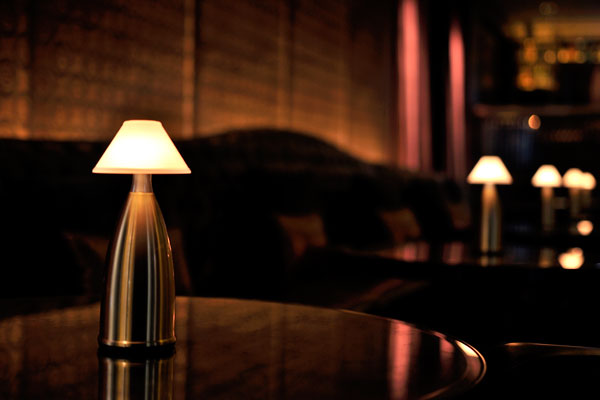
Manhattan at The Regent, Singapore (interior design by Distillery)
Through his studio SWITCH, Sugamata has worked repeatedly with Distillery, as well as numerous other studios in Singapore and Japan. He established SWITCH in 2010, and his portfolio spans urban, landscape, architectural and interior lighting.

Johnnie Walker House, Seoul (interior design by Asylum Creative). Photo by Thomas Cockram
At Manhattan, Sugamata developed a lightscape where moments of brightness emerge strategically from a purposefully dim environment. “Although it’s very dim, it’s not black,” he explains. “We picked up textures such as the beautiful stone table tops and the fabric. We minimised the use of downlights, which can be very uncomfortable, and used rechargeable lamps at the banquettes. We also highlighted the profile of the curved seat back.”

Johnnie Walker House, Seoul (interior design by Asylum Creative). Photo by Thomas Cockram
At The Ingredients Room and The Rickhouse – the lattice-enclosed spaces that frame the entrance – Sugamata developed a lantern-like quality by uplighting the ceiling. At the raised bar, concealed LEDs cast light through glass shelves onto the fronts of the bottles, illuminating not only the labels but also the colours of the liquors within. An unseen lighting control system allows lighting levels to be adjusted for five scenes: daytime, evening, night time, midnight and cleaning.
The subjectivity that comes with lighting preferences does at times create challenges for Sugamata. “Some people will say a space is bright enough, but others will find it very dim. There are many different views, and it can be difficult to guess what other people will think,” he says. Nevertheless, his impressive portfolio suggests well-honed skills – demonstrated in projects such as Sushidal at Singapore’s Marina Mandarin and Johnnie Walker House in Seoul (lighting concept by SWITCH; lighting design development and construction documentation by EON Sid).
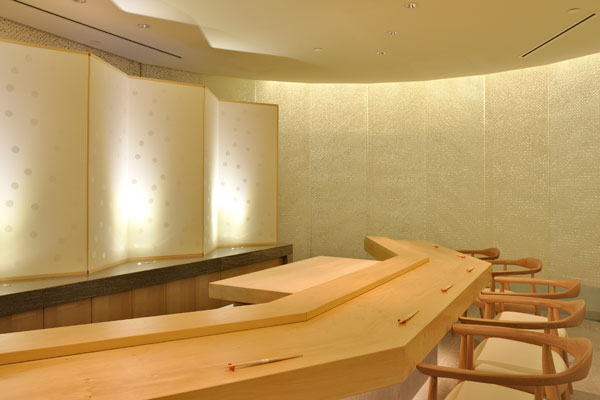
Sushidai at Marina Mandarin, Singapore (interior design by Miso, paper design by Requ)
Does Sugamata detect any differences in lighting preference between Singapore (his new home) and Japan? “If there are differences, they are very subtle,” he says. “Traditional Japanese architecture had a different quality of light, but now, when it comes to artificial lighting design, it’s very difficult to find cultural differences.”
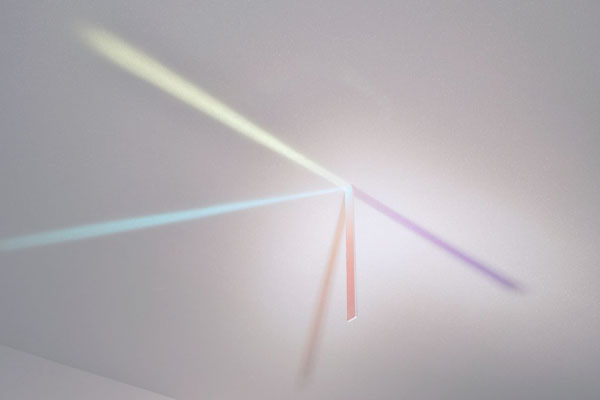
Sundial of Many-time (proposed light installation for a luxury watch boutique)
He continues, “Many Japanese lighting designers say that Jun’ichirō Tanizaki’s book In Praise of Shadows represents the Japanese lighting aesthetic, but I don’t think so. If the Japanese people really praised shadows, would Japanese cities be so bright? I think people needed to accept darkness in the past; they had no other choice. But when technology became available, they started making their spaces brighter and brighter.”
SWITCH
switch.pro
A searchable and comprehensive guide for specifying leading products and their suppliers
Keep up to date with the latest and greatest from our industry BFF's!

In the pursuit of an uplifting synergy between the inner world and the surrounding environment, internationally acclaimed Interior Architect and Designer Lorena Gaxiola transform the vibration of the auspicious number ‘8’ into mesmerising artistry alongside the Feltex design team, brought to you by GH Commercial.

Savage Design’s approach to understanding the relationship between design concepts and user experience, particularly with metalwork, transcends traditional boundaries, blending timeless craftsmanship with digital innovation to create enduring elegance in objects, furnishings, and door furniture.

Create a configuration to suit your needs with this curved collection.

Channelling the enchanting ambience of the Caffè Greco in Rome, Budapest’s historic Gerbeaud, and Grossi Florentino in Melbourne, Ross Didier’s new collection evokes the designer’s affinity for café experience, while delivering refined seating for contemporary hospitality interiors.
The internet never sleeps! Here's the stuff you might have missed

Continuing our new series on the design enthusiasts who work in all sorts of different roles across the industry, we hear from Innerspace’s Creative Collaborator and State Manager NSW.

Set to undergo a $60-million revitalisation, the National Gallery of Australia has announced the launch of a landscape design competition for its Sculpture Garden.